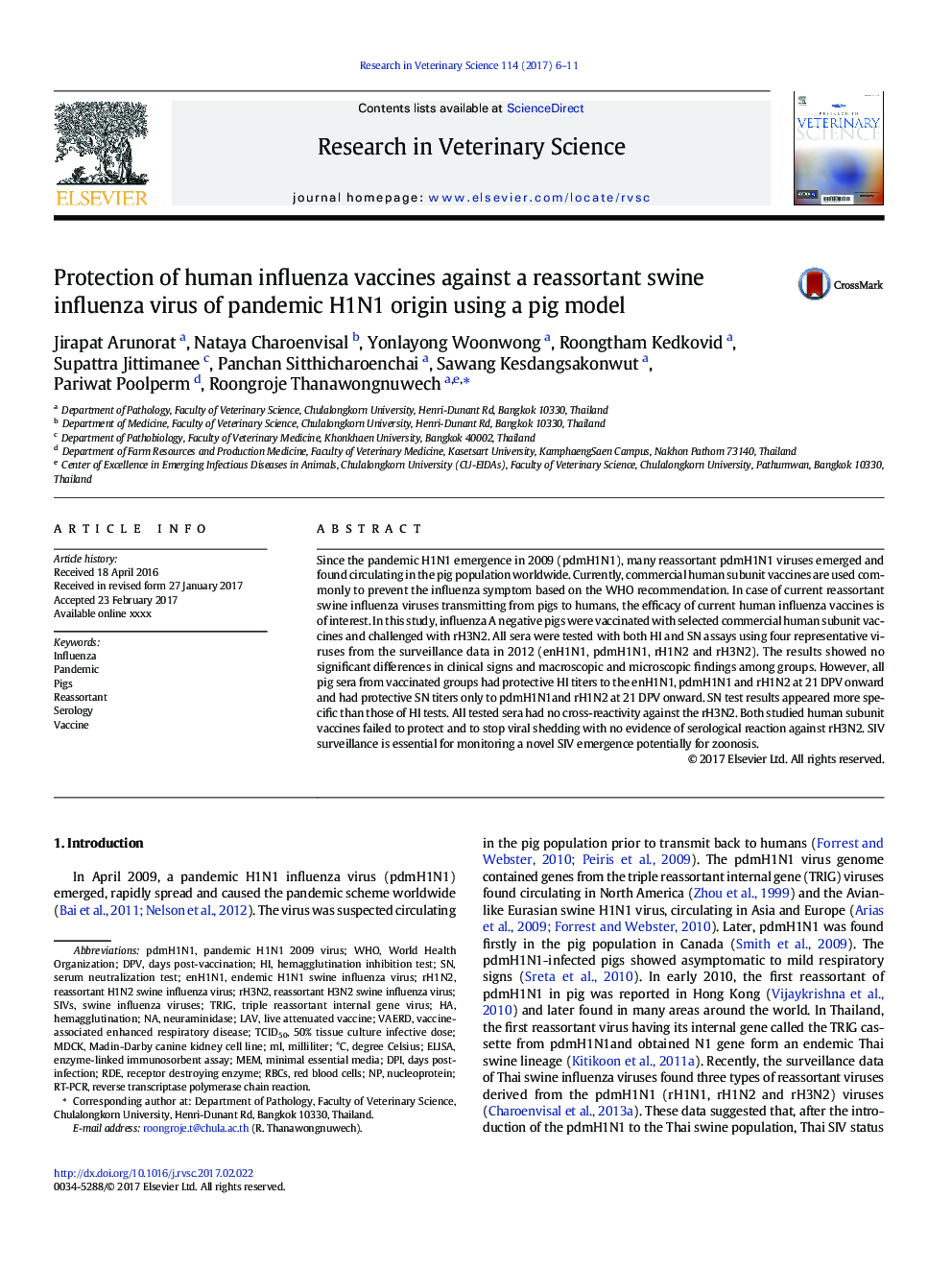| Article ID | Journal | Published Year | Pages | File Type |
|---|---|---|---|---|
| 5543934 | Research in Veterinary Science | 2017 | 6 Pages |
Abstract
Since the pandemic H1N1 emergence in 2009 (pdmH1N1), many reassortant pdmH1N1 viruses emerged and found circulating in the pig population worldwide. Currently, commercial human subunit vaccines are used commonly to prevent the influenza symptom based on the WHO recommendation. In case of current reassortant swine influenza viruses transmitting from pigs to humans, the efficacy of current human influenza vaccines is of interest. In this study, influenza A negative pigs were vaccinated with selected commercial human subunit vaccines and challenged with rH3N2. All sera were tested with both HI and SN assays using four representative viruses from the surveillance data in 2012 (enH1N1, pdmH1N1, rH1N2 and rH3N2). The results showed no significant differences in clinical signs and macroscopic and microscopic findings among groups. However, all pig sera from vaccinated groups had protective HI titers to the enH1N1, pdmH1N1 and rH1N2 at 21Â DPV onward and had protective SN titers only to pdmH1N1and rH1N2 at 21Â DPV onward. SN test results appeared more specific than those of HI tests. All tested sera had no cross-reactivity against the rH3N2. Both studied human subunit vaccines failed to protect and to stop viral shedding with no evidence of serological reaction against rH3N2. SIV surveillance is essential for monitoring a novel SIV emergence potentially for zoonosis.
Keywords
DPIMDCKRBCsTCID50Madin-Darby canine kidney cell lineRDERT-PCRSerum neutralization testDPVRed blood cells50% tissue culture infective dose°CHemagglutination inhibition testInfluenzaReassortanttrigEnzyme-linked immunosorbent assayELISAPigsdegree celsiusminimal essential mediadays post-infectiondays post-vaccinationWorld Health OrganizationSerologyMEMmilliliterneuraminidaseNucleoproteinHemagglutinationVaccineLive attenuated vaccinereverse transcriptase polymerase chain reactionpandemicLAVWHOreceptor destroying enzyme
Related Topics
Life Sciences
Agricultural and Biological Sciences
Animal Science and Zoology
Authors
Jirapat Arunorat, Nataya Charoenvisal, Yonlayong Woonwong, Roongtham Kedkovid, Supattra Jittimanee, Panchan Sitthicharoenchai, Sawang Kesdangsakonwut, Pariwat Poolperm, Roongroje Thanawongnuwech,
